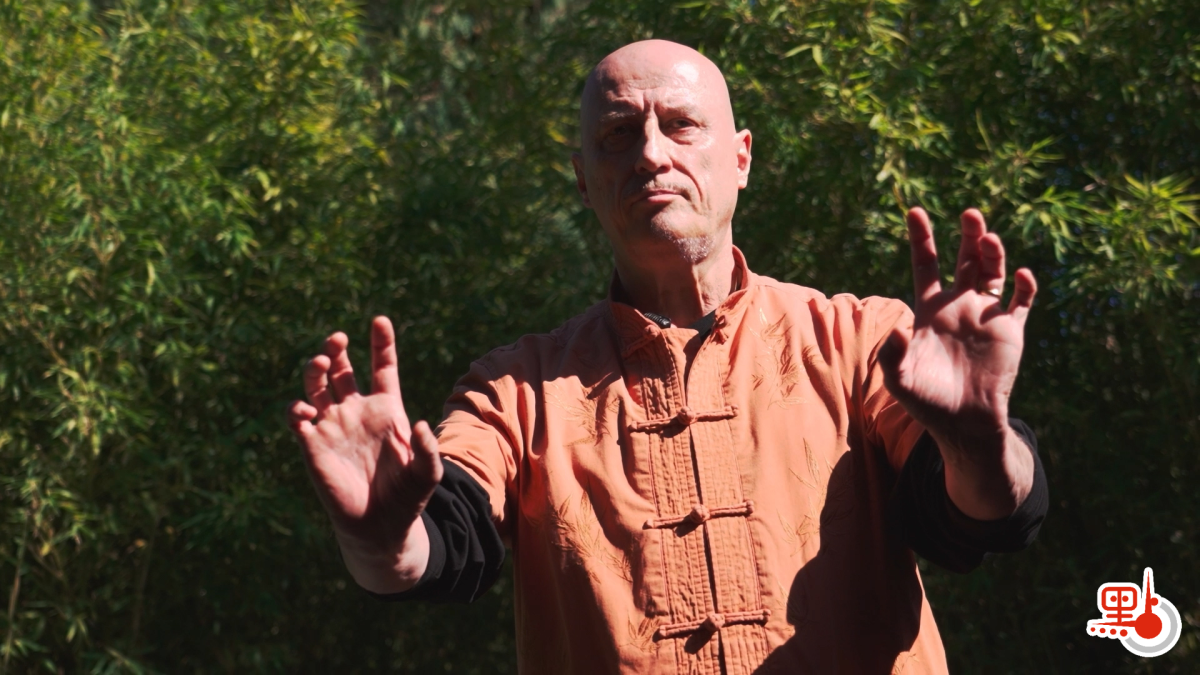In 1971, the first film that kung fu superstar Bruce Lee made upon returning to Hong Kong, The Big Boss, was released. The highly personalized martial arts stunts in the film, such as Lee's swift triple spinning kicks, aerial flying kicks, and high-pitched shouts, captivated audiences and sparked a kung fu craze.
This kung fu wave from the East swept over Ronald Galland, a Belgian teenager thousands of miles away. Frail since childhood, he was often teased and bullied at school. Bruce Lee's every move in the film dazzled him. More than half a century later, Galland's eyes still sparkle with the excitement of a teenager when recalling that feeling.
The gears of fate began to turn. Through a friend's introduction, Galland became a disciple of a master in a local Chinatown and began his martial arts journey. Today, the teenager has become Master Kong of the Tith Ngaw Pai Hakka Kung Fu School in Antwerp's Chinatown—he is better known by his Chinese name: Kong Han-lei.
His story with Chinese kung fu and Chinese culture has now spanned over half a century in the blink of an eye.

In Antwerp, Belgium, during the 1970s, finding a master to teach Chinese kung fu was no easy task. Still, through a friend's introduction, Galland found a teacher who taught kung fu to Chinese people in Belgium and began his training. Three years later, the master returned to China, and Galland went on to learn from different masters, eventually connecting with Master Chung of the Tith Ngaw Pai from Hong Kong in the 1990s.
Galland admitted that initially, he only followed his teacher to learn and had no intention of teaching. "Suddenly, one day, my master called and invited me to return to Hong Kong with him to attend the opening ceremony of an ancestral hall." Galland recalled that after the event, his master told him, "Kong, Tith Ngaw was mine before. Today, it is yours. What I do, you should do; what I know, you should know." Galland described that day as his "graduation ceremony." From that day on, Galland transitioned from a "kung fu enthusiast" who followed his master to learn from Master Kong, who inherited and passed on the Tith Ngaw Pai and even Chinese kung fu.
So, what is the core of this inheritance?

Not dominating the opponent, but stopping the fight
The interview with Galland was scheduled for 4 p.m., and his kung fu class would begin at 6 p.m. that evening. During the latter part of the interview, students gradually arrived at the kung fu school: they wore uniform training attire and solemnly clasped their hands in a traditional salute to the master or the film crew. Before the class began, Galland would lead everyone in paying respects to the founding master.
Currently, over 30 disciples study under Galland at this school in Antwerp, many of whom have been learning kung fu for over 20 years. They are more like a close-knit family.

Mark, who has been learning martial arts from Galland since 1997, now assists him in teaching. "I regard him as a bit like a father," Mark said, noting that Galland offers advice in many areas beyond martial arts. Another student, Joris, said the reason he has followed the master for so many years is that "he always opens new doors for us and we always gain new insights." He said it's not just about learning kung fu but also about culture, philosophy, and everything related.
On the wall of Galland's kung fu school, there is a large calligraphy character for "endurance" (忍) and an explanation about the principle of balancing culture and martial arts. This principle emphasizes how culture and martial arts should be balanced, because "if you only practice kung fu, you're just a fighting machine; if you only study, you're just a person who talks nonsense."
Indeed, although the Tith Ngaw Pai kung fu emphasizes "floating, sinking, swallowing, and spitting," characterized by small movements and strong explosive power, in Galland's view, the important thing has never been "one side dominating the other." "Fighting is easy, but knowing how to stop a fight is more important," Galland said.

Kung fu is only 3% of Chinese culture
"Before learning lion dance, first learn martial arts." This is a saying passed down in Chinese lion dance culture. Besides delving into Chinese kung fu, Galland has a strong interest in traditional Chinese cultures such as lion dance, dragon dance, and pixiu dance. Over the past 30 years, he has occasionally taken his disciples to Hong Kong specifically to learn these traditional cultural skills and related musical techniques. He has even led his disciples to perform at Chinese New Year celebrations in Antwerp's Chinatown.

In Galland's heart, kung fu has given him a rich and fulfilling life, but if we "suppose Chinese culture is 100%, kung fu might only account for 3%." And he is curious about everything in Chinese culture. Stepping into Galland's kung fu school, one can feel the truth of his words: from the exquisite full set of purple clay teaware in the room to the bamboo forest in the backyard for dance practice, the not-so-spacious space is filled with ubiquitous Chinese elements.
Galland said he hopes to use this 3% as a starting point. Whether for himself, those curious about Chinese kung fu, or his disciples, he hopes everyone can be exposed to and learn more about things related to China, enriching their lives. "That's what we've been doing," Galland said.
Related News:
C'est la Chine · Poland | Mountain city diary: Chongqing through eyes of Polish kids




















Comment